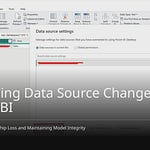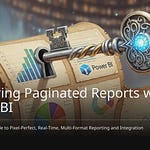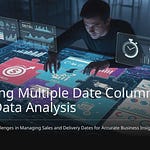Mastering Governance is very important in today’s world of data. In 2024, 71% of organizations said they have a data governance program. This is up from 60% in 2023. This shows how crucial governance is for organizations using Microsoft Fabric. As users start using this platform, they face special challenges. Unlike older systems, Microsoft Fabric focuses on user empowerment. This is key for good governance. A good strategy makes data easier to use. It also helps create a culture of following rules. This way, users become trusted partners in the governance system.
Key Takeaways
Data governance is very important for organizations using Microsoft Fabric. It helps manage data well and makes sure they follow the rules.
A multi-layered governance model gives flexibility and specific rules for different data areas. This method improves data quality and security.
Set clear roles and responsibilities for data ownership. This clarity helps keep accountability and ensures good data management.
Regularly check and update governance policies. Keeping governance rules current helps adjust to changing data needs and improves overall effectiveness.
Encourage a culture of teamwork and ongoing learning. Support collaboration and continuous skill development to improve data governance practices.
Mastering Governance in Microsoft Fabric
Governance in Microsoft Fabric means having a clear plan to manage data well. It includes different tools that help keep your data organized, safe, and trustworthy. Here’s a simple look at the main parts of governance in Microsoft Fabric:
Knowing this system is very important because it helps you manage data well. You need to change how you think about governance when using Microsoft Fabric. Moving from old ways of governance to a new, more flexible model means you have to rethink data management.
Here are some reasons why changing to new governance models is important:
A single approach makes it easier to follow rules and keep policies the same across your data.
It helps prevent security problems that can happen when different systems connect.
This flexibility lets you change with new needs while still controlling your data.
To create a good governance plan in Microsoft Fabric, think about these key parts:
Data Ownership & Stewardship: Give clear roles for who owns and takes care of data.
Security & Compliance: Work with Microsoft’s security plan to keep data safe and follow rules.
Data Lineage: Automatically create maps to show where data comes from and how it changes.
Access Control: Set up detailed access rules to keep data safe from misuse.
Cataloging & Discoverability: Use Microsoft Purview to make data easier to find and understand.
Monitoring & Auditing: Keep track of who accesses data and what changes for rules and analysis.
By mastering governance in Microsoft Fabric, you help yourself and your organization manage data well. This leads to better choices and a stronger data management plan.
Importance of Governance in Fabric
Governance in Microsoft Fabric is very different from governance in Microsoft 365. Both platforms want to manage data well, but Fabric has its own challenges and chances. In Microsoft 365, governance usually focuses on central control and the same rules for everyone. But Fabric uses a more spread-out approach. You need to adjust to this change for good data governance.
In Fabric, there is a multi-layered governance model. This model allows for specific rules for different areas instead of one rule for all. You should know that each workspace and data area may need special governance plans. This flexibility can help you manage data better.
Good governance in Microsoft Fabric greatly affects data quality and following rules. Here are some important effects:
When you use strong governance practices, you make sure the right people can access the right data at the right time. This stops data misuse and improves how things run. Trust in your data grows, leading to better decisions in your organization.
But weak governance can cause big problems. For example, a large car company had issues because of poor governance in Microsoft Fabric. They faced problems like data spread, uneven access control, and not knowing how workspaces were used. These problems show risks that could lead to rule-breaking or data leaks.
To sum up, knowing the differences in governance between Microsoft Fabric and Microsoft 365 is very important. You need to accept the new governance model to keep data quality high and follow rules. By doing this, you can protect your organization from risks and improve your data management strategy.
New Governance Model
The governance model in Microsoft Fabric uses a multi-layered approach. This setup helps you manage data governance better in different areas. Each layer meets specific governance needs. This keeps your data safe and following the rules. Here are some important features of this approach:
Integration with Microsoft Purview: This connection boosts your data governance skills. It makes sure governance rules apply the same way to all data sources.
Data Lineage: You can see where your data comes from and how it changes. This helps keep things clear and responsible.
Automated Data Classification: Tools like sensitivity labels help protect sensitive data automatically.
This multi-layered governance model makes data security and management better in Microsoft Fabric. It helps with finding, organizing, and managing data assets. By using these tools, you can follow rules and improve data security.
Decentralization of governance duties is another key part of the new governance model. This change lets domain owners take charge of their data governance. Here are some benefits of this decentralization:
It creates a single data platform.
It helps deal with the challenges of managing sensitive information.
It supports following rules set by regulators.
However, decentralization also brings challenges. Organizations must keep accountability when governance duties are spread out. Here are some ways to maintain accountability:
By using a multi-layered governance approach and spreading out responsibilities, you can build a strong governance system in Microsoft Fabric. This system will help you manage data well while keeping it secure and compliant.
Common Misconceptions in Data Governance
Many organizations struggle with data governance in Microsoft Fabric. Knowing these common problems can help you avoid them. Here are some issues to be careful about:
Weak data governance can cause serious risks. You might face:
Different access permissions that can expose data by mistake.
Risks of unauthorized people getting into restricted data.
Compliance issues because of data leaks.
Also, poor governance can lead to incomplete or wrong data. This can cause misleading results. Remember, “Garbage in is garbage out.” The decentralized setup of Microsoft Fabric makes governance harder. Each service has its own features, which makes it tough to apply the same rules.
Confusion about permissions and labeling often happens in Microsoft Fabric. Here are some common misunderstandings:
Sensitivity labels help users know how sensitive their data is.
Unlabeled items can be a security risk since they might be misused or shared wrongly.
Fabric permissions can be complicated, making it hard to manage access control.
To fix these misunderstandings, you should explain different permission situations and structures in Microsoft Fabric. Knowing the different roles and permissions is key for good data governance. Microsoft Fabric has a flexible permission model that helps you manage data access well.
By understanding these common misconceptions, you can improve your data governance practices and ensure compliance in your organization.
Real-World Governance Scenarios
Organizations using Microsoft Fabric often face different governance problems. Here are some common issues:
These challenges can cause big problems. For example, data spread can lead to inefficiencies. You might also find it hard to combine machine learning models. Governance issues can slow down work, making it tough to reach your goals.
From these real-world examples, you can learn important lessons. Here are some key takeaways:
By using these lessons, you can make your data governance better. Setting clear expectations helps your team work together. Adding governance early helps you avoid problems later. A structured approach lets you be creative while keeping rules and security in place.
Best Practices for Data Governance
To make data governance work well in Microsoft Fabric, follow these best practices. They will help you manage data better and stay within the rules.
Establish Clear Governance Frameworks: Make a clear plan for governance. Define who does what and how to manage data. This helps everyone know their jobs.
Educate Users on Copilot Limitations: Teach users about what Copilot can and cannot do. This knowledge helps them use the tool well without depending on it too much.
Regularly Review and Update Domains: Plan regular checks of domain structures. This keeps your governance model clear and up-to-date.
Besides these steps, working together is very important for good data governance. Build a culture where everyone shares responsibility for data. Encourage teamwork across different areas to get the most out of Fabric. Clearly define roles while promoting T-shaped skills. This helps teams work better together.
You should also follow this helpful advice:
Automate metadata scanning to list all Fabric items. Add a business glossary to make metadata easier to understand.
Use endorsements to mark datasets as certified or promoted. Add custom tags to help find data more easily.
Set governance policies by identifying stakeholders, classifying data, and deciding on access rules and retention guidelines.
Set up Fabric’s Admin Portal to manage tenant settings, assign roles, and connect with Purview for centralized governance.
Create domains and workspaces that match business functions. Use sensitivity labels to protect sensitive data.
Protect data by using sensitivity labels, encryption, and access rules.
Keep track of user activity with audit logs. Use compliance dashboards to see policy violations and improve governance practices.
By following these best practices, you can make data governance better in Microsoft Fabric. This will improve data security and compliance, which is good for your organization.
The Mindset Shift in Governance
In Microsoft Fabric, you need to change how you think about governance. Old methods often focus on strict rules and central control. But Fabric supports a more flexible and spread-out model. This change helps you react quickly to data needs while keeping control and being open.
Here are some important points about this mindset change:
Ongoing learning is very important in this new governance world. The areas of cloud computing and data analytics change quickly. To stay ahead, you must keep your skills updated. Here are some reasons why learning all the time is important:
Microsoft Fabric certification helps you adapt and improve your skills.
Certification shows you can manage different data sources and use good data governance.
To build a culture of ongoing improvement in data governance, think about these strategies:
Set clear ownership and responsibility by giving data stewards roles.
Create easy-to-find policies and procedures.
Manage data quality with regular checks and cleaning.
Stop data silos by making sure data connects across the organization.
Form a data governance committee to guide efforts and match business goals.
By changing your mindset and committing to ongoing learning, you can improve your data governance practices in Microsoft Fabric. This way will lead to better compliance, higher data quality, and a more flexible organization.
In short, good data governance in Microsoft Fabric is very important for your organization. It helps you manage data safely and effectively. By using a multi-layered governance model, you can improve data quality and follow the rules.
Think about these important lessons from recent case studies:
As you plan for the future, expect trends like using AI in governance and systems that grow with business needs. Welcoming these changes will help you succeed in a fast-changing data world.
FAQ
What is data governance in Microsoft Fabric?
Data governance in Microsoft Fabric means managing data well. It makes sure data is good quality, safe, and follows rules. You set clear roles and responsibilities to keep data correct in your organization.
How does governance differ from Microsoft 365?
Governance in Microsoft Fabric focuses on being flexible and spreading out control. Unlike Microsoft 365, which has central control, Fabric lets domain owners manage their own data governance based on their needs.
Why is data lineage important?
Data lineage helps you see where data comes from and how it changes. It gives you clarity, making sure everyone is responsible and follows rules. Knowing data lineage helps you make smart choices based on trustworthy data.
What are common pitfalls in data governance?
Common problems include making rules too complicated, having teams work alone, and using too many tools. These issues can cause data misuse, risks of not following rules, and slow processes. Knowing these problems helps you create better governance plans.
How can I improve my data governance practices?
You can make data governance better by creating clear plans, teaching users, and checking domain structures often. Working together across teams builds a culture where everyone shares responsibility for managing data.


















